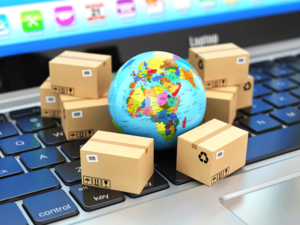 ThinkStock Photos
ThinkStock PhotosThe outbreak of the COVID-19 pandemic and the subsequent lockdown in India, has made the use of technology a necessity rather than an option. As we collectively adapt to the ‘new normal’, digitization has emerged as a key pillar to support the needs of the communities, individuals and businesses alike. In the evolving scenarios of production and consumption, ecommerce lies in the sweet spot of striking a balance between supporting product value-chains, spurring latent demand and boosting economic growth.
Enabling e-commerce has a domino growth effect on several other sectors including logistics, warehousing, data analytics and digital payments. This sudden pivot in operations has introduced a new way of thinking, thereby encouraging innovation across sectors. It is noteworthy that digitization is not just reforming a company or a sector, it is a close interplay among sectors to increase value and efficiencies. This is also an integral premise of e-commerce. Given its impact and reach, e-commerce is now being seen as the preferred channel to connect with consumers and the local MSME ecosystem across the country.
Supply-side support
MSMEs are the growth drivers of the Indian economy and to ensure that they continue to lead the country towards economic growth, Prime Minister Narendra Modi led Government has announced strategic measures, including those under the ‘AatmaNirbhar Bharat’ initiative. In conjunction with these measures, it is an opportune time for MSMEs to capitalize on technology and enhance use of e-commerce to achieve resource optimization and efficiencies. This is also an opportunity for MSMEs and sellers to clear up the piled-up inventory by catering to a pan-India market through e-commerce. This market access and liquidity in the hands of MSMEs, by leveraging online channels can expedite the economic recovery process for small sellers and manufacturers.
In the last few months, several MSMEs have transitioned towards digitization and e-commerce. Uttar Pradesh, Maharashtra, West Bengal and Tamil Nadu are the top states where local enterprises have shown maximum interest in taking their businesses online. Due to the current sentiment towards digital transformation and e-commerce, more than 70% of the new sellers on Flipkart for instance, came from smaller cities.
Online channels can also help to transform and propel India’s unique handicraft ecosystem which can be a shot in the arm for “AatmaNirbhar Bharat”.
Propelling demand
There is a significant pent up demand in the economy, especially from Tier 2 and Tier 3 cities, which can be spurred up through e-commerce. Giving access to quality products & wide selection at affordable prices has been one of the hallmarks of e-commerce in India. It is this attribute that is pulling a new set of buyers, especially from Tier 2 and Tier 3 towns, towards online buying. The Prime Minister announced that the task to connect over six hundred thousand villages in India with an optical fibre network will be completed in the next 1000 days. This will bring in a new set of customers looking to buy quality products at affordable prices and is an opportunity which can be leveraged by sellers on e-commerce platforms. The focus on voice and vernacular language interface on ecommerce is significantly boosting the prospects for a large number of consumers in Tier 2 & Tier 3 towns, while bringing new growth opportunities of lakhs of MSMEs & sellers in India.
The lockdown has definitely changed the way we buy products, and we have seen that the trust in buying through e-commerce is increasing across generations. The demographic profile of online consumers is expanding and evolving drastically, especially in the wake of social distancing norms of the pandemic. From Gen Z to baby boomers, all sections of consumers are actively looking at digital means for availing goods and services. If numbers are to be taken as guiderails, then a Goldman Sachs report indicates that e-commerce in India is likely to register a growth of over 18% for the current fiscal with around 33% in 2021 and 28% in 2022.
The Domino effect
Most importantly, enabling and creating a conducive environment for e-commerce to flourish can have a compounding impact on several other sectors including logistics, warehousing, data analytics and digital payments. Ancillary service providers are coming up in small towns and villages and can provide huge employment opportunities in logistics, warehousing and supply chain functions. Here in lies the potential for locally developed technology to solve unique Indian problems and help grow an inclusive & efficient retail ecosystem. Be it enabling language interface for consumers to get comfortable with their online journey or using technology to develop solutions on the supply chain to digitize Kiranas and local MSMEs.
On the logistics side, there is an enormous opportunity to digitize Indian supply chain using state of the art local technology. This will help build a more resilient, efficient & transparent supply chain in the country, which will support the ongoing reforms in the manufacturing and agriculture ecosystem resulting in boost to key initiatives such as ‘Make in India’ & ‘Doubling Farmers’ income’.
India is gradually and vigilantly moving towards opening up major economic activities, after several phases of lockdowns and unlocking. While the pandemic has affected everything and everyone in one way or the other, the most vulnerable ones will require mindful measures to kick start. There is no doubt that e-commerce today lies at the heart of the convergence of demand and supply, with MSMEs in tow. All that is needed now is further boost through digital transformation, which can propel economic activity in an evolving retail ecosystem.
(The writer is SVP and Chief Corporate Affairs Officer at Flipkart Group)











 Get Unlimited Access to The Economic Times
Get Unlimited Access to The Economic Times
